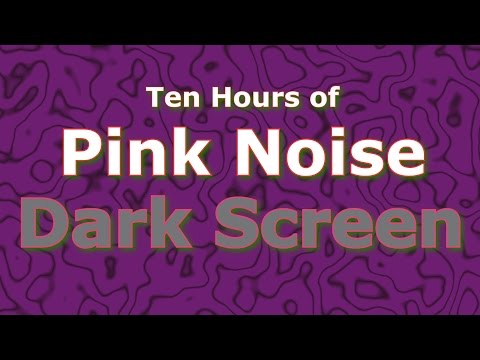On YouTube, you may find a variety of content called “ASMR.” ASMR is a complicated emotional state that some people experience when they hear specific triggers. And you’ll notice that they use just about any sound imaginable. Some of them may have a surprising effect on you, while others may have no impact at all. Here are ten sounds that people utilize to impact feelings.
10 A Little Light Laughter
Have you ever heard of background laughter? Seinfeld wouldn’t be nearly as funny without it. TV shows often play laugh tracks when there is no live audience on set to encourage viewers to laugh at the right time. Laughter is a nonverbal emotional expression, and the noises we make when we feel intense emotions are more akin to animal calls than human speech. We create them in straightforward ways (unlike speech), and they are regulated by an evolutionarily “older” brain system, which is also in charge of vocalization in other mammals. As a non-verbal expression, laughter is commonly related to emotional reactions. It’s difficult not to laugh when someone else does. The brain may contain “mirror neurons,” which are active both when you are executing a task and watching someone else complete it. Mirror neurons don’t just involve laughter, though; when we hear someone talking while crying, for example, it’s tough not to feel sorry.
9 Let It Rain
One of the most prevalent noises used in ASMR content is rain sound effects. Rain-related sounds can evoke powerful emotional memories, both positive and negative. The sounds of rain can conjure up images of a relaxing day at home, while the sounds of thunder can give you a feeling of emotional release. You may be one of those folks who like to sit near a window and listen to the rain patter on the panes. While some people find rain calming, others don’t. According to one study, over 9% of people are “rain haters”—angrier or more depressed on days with more precipitation. Tecsia Evans, Ph.D., is a clinical psychologist who claims certain people are more likely to feel lonely or down when it gets dark and dismal outside. When it’s raining outdoors, it’s not uncommon to notice a shift in moods, such as depression or poor self-esteem. Do you feel the same?
8 Mother Nature’s Voice
Sounds we hear in nature can help us relax, and there’s a good reason for this belief. According to Trever Cox, an acoustics professor at Salford University, these sounds are usually connected with associations we’ve evolved to make. For instance, when the birds stop chirping, you may become instinctively aware that something is wrong. Also, in prehistoric times, hearing the sound of nature meant that the area had water, food, and other necessities for survival. Quiet, barren locations, on the other hand, indicate that survival may be difficult. All of these are natural responses for humans trying to survive. Wouldn’t you feel safer if you heard the birds chirping, the high-pitched buzzing of cicadas, and river water flowing? Hearing noises from natural settings calms us down and makes us feel secure. A 2017 study at Brighton and Sussex Medical School observed reactions to artificial and natural noises while participants completed an attention-based assignment. When the volunteers were exposed to natural noises, their reaction times were significantly faster. They saw a decrease in the sympathetic response (which starts the body’s automatic reaction to dangerous or stressful conditions) and increased parasympathetic response (which helps the body rest and function normally).
7 Just a Whisper
You may see whispering as an odd choice for a sound that can affect emotion. And you’re not wrong. But believe it or not, some people find whispering a soothing sound. Does the delicate stillness provide an escape from the noisiness of the real and virtual world? Or could it just be the familiarity of someone else’s voice? No matter the reason, the sound of someone whispering is the most prevalent ASMR trigger. Some argue that whispering has a comparable effect to listening to relaxing music or natural noises such as running water or waves at the beach. Many people still doubt the effectiveness and authenticity of whispering and ASMR in general. Still, it’s being used to treat insomnia and anxiety.
6 Tapping Sounds
Tapping sounds, like whispers, can act as auditory triggers, causing significant emotional or physiological reactions, including a pleasant ASMR sensation. It’s not always positive, though, especially for people who suffer from misophonia, a condition in which certain noises cause physiological or emotional responses that may seem irrational in the moment. Have you ever had an emotional response to a sound that’s so intense that you want to run away, cover your ears, or punch somebody simply making slurping noises, tapping their fingers, or humming? That’s how misophonia works. It could be a tap, a tick, or even a drip. Maybe people whistling drive you to near violence. Like they say in Encanto, “Pressure like a drip, drip, drip, that’ll never stop.”
5 White Noise
White noise is that continuous “sh” sound—similar to the sound of a waterfall or TV and radio static. The color white really has nothing to do with it, except that it’s a noise that can blend in easily and go unnoticed by many. At least, until it’s not there anymore. Depending on the person, white noise can either be relaxing or drive you totally insane. See, these sounds are a mix of sound frequencies detectable to the human ear, and it turns out that this noise provides a variety of health benefits. White noise helps babies fall asleep faster, according to a study published in the journal Archives of Disease in Childhood. It’s also been shown to help people with tinnitus (ringing in the ears). White noise can also help you sleep by disguising more irritating sounds. It keeps noise pollution from disrupting your sleep, which has adverse health effects on our biological systems. They can help you fall asleep and stay asleep, and they may even train your brain to recognize when it’s time for bed. So, every time your TV antenna is broken, maybe you should leave it on and let the static noise lull you to sleep. Or just download a white noise app if you don’t know what a TV antenna is.
4 Pink Noise
Pink noise works the same way as white noise in that it filters out distracting sounds so you can sleep. The difference is that pink noise has deeper noises and lower sound waves, making it a little friendlier and more calming. White noise like a fan or a vacuum can be loud and high-pitched. Pink noise employs a continuous frequency, or pitch, like with steady rain, wind rustling through trees, or waves on the beach. It creates a more even, balanced sound. The extra depth and lower waves filter out higher sounds. As a result, you hear lower-frequency noises that are more calming. Pink noise, like white noise, isn’t going to work for everyone. You won’t know if pink noise will help you unless you try it.
3 The Sound of Music
From our ancestors’ drum beats to today’s limitless streaming services, music has always been a part of the human experience. It can positively influence your mood and emotions, increasing happiness and decreasing worry and anxiety. Heck, even sad music can improve your mood. When people are grieving a loss, like the end of a long relationship, they choose sad music. Why? You can use sad music to replace a lost connection. Most people need an empathic friend who understands what they’re going through, right? But when your friend is busy, you can turn on that Taylor Swift album instead. Copium intensifies It’s easy to see why people find that listening to music helps them unwind. Our muscles relax, our respiration slows down, and our stress levels drop when listening to music. So turn up the volume and jam out—you’ll feel better.
2 Grandma, Is That You?
It may sound corny, but hearing your family’s voices might significantly affect your mental health. If you haven’t heard someone’s voice in a long time, it can spark something in you—good or bad. Watch this video on YouTube When you listen to a tape of your grandma’s voice who passed away last year, your emotional response could come from remembering the feeling of her hugs or the taste of her chocolate chip cookies. On the flip side, a voicemail from your crazy sister can send you into an emotional spiral. These sounds can be recorded, but they can also be something you experience in person. You can get that ASMR satisfaction by spending more time with your family, creating unforgettable moments you can laugh about and remember for the rest of your life. Even the memory of their voice can be soothing. It might help you relax more during difficult times.
1 Baby, You’re a Firework
There’s no denying that we love our fireworks—even though many have lost fingers or experienced significant burns to their hands while attempting to set them off in the backyard on the 4th of July. But it looks like that danger is part of the fun. The euphoria of listening to firework explosions actually stems from the fact that they scare us. How come? Fireworks cause the amygdala, a little ball of nerves in the brain that perceives fear, to activate. It triggers a surge release of dopamine, a neurotransmitter that regulates pleasure. So how can something we fear be pleasurable to us? Fireworks-induced fear is regulated, unlike sounds with an uncontrolled or unexpected volume level. But not everyone loves this sound. Fireworks can be tough for people with PTSD, and they make it difficult to fall or remain asleep, especially if they induce anxiety that lasts a long time. Because of the lack of sleep induced by fireworks, you may experience tension, worry, or anger when waking up. There’s nothing wrong with chilling out to the sound of a Roman Candle; just make sure you can handle it.
























